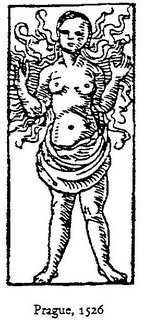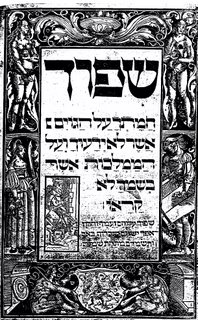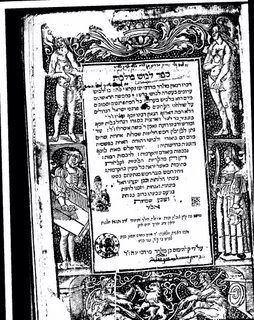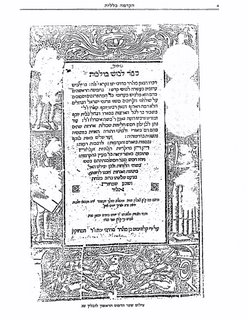Hatikvah, Shir HaMa’alot, & Censorship

He first explains that this question involves the question of whether a tune from an impure source is appropriate to use. He begins by discussing the two well-known teshuvot (the Teshuvot haBakh and the Krach shel Romi) dealing with using non-Jewish tunes for Jewish songs.
However, without getting into all of his halakhic discusion, I would like to focus on his final proof that using a tune or the like for an impure source is inappropriate. He finishes with a quote from the book Shivchei Rav Hayyim Vital. This quote demonstrates, for him, that it does matter what the source of something is. The quote is as follows:
אמת הוא שהפזמונים שחיבר הם בעצמם טובים, אבל הוא בעצמו אסור לדבר עמו, ומי שמוציא מפיו הפזמונים שחיבר רע לו. כי תמיד פיו דובר נבלה וכל ימיו שיכור While it is true that the songs he composed are themselves good, he [the composer] it is not permitted to speak with him, and whomever sings the songs he [the composer] wrote, it is bad. Because [the composer] is always speaking profanities and spends his days drunk.
Thus, according to R. Weinfeld, this shows that R. Hayyim held it is very important to know who the source is and if that source is bad, one should not use it even if it is a nice song. In fact, R. Hayyim continues (although this does not appear in the Lev Avrohom) with other rather serious allegations against this person. However, this proof is premised on the fact that we accept this. That is, if we were to figure out who this person was and we in fact do sing his songs, obviously we would not follow R. Hayyim’s understanding.
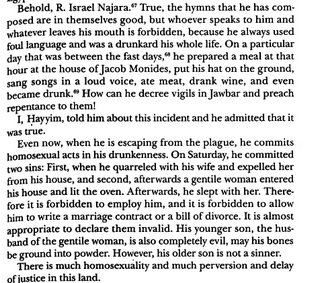
Now, as is apparent, in the Shivchei this person is anonymous. But all is not lost. The Shivchei is in fact an abriged version of a longer work. That work, Sefer Hezyonot the Book of Visions, is in fact published.
The Sefer Hezyonot was first published in 1954 by Mossad HaRav Kook. Admittedly, this book contains rather shocking material and was therefore claimed that it was not in fact from R. Hayyim. R. Reuvan Margolios, among others, protested outside of Mossad HaRav Kook after this was published. Needless to say Mossad HaRav Kook never republished this. Now in truth it seems the manuscript which was used to print this book was actually from R. Hayyim’s own hand. And therefore this book has actually been republished recently in three different editions.
The first was in 1999 in an English edition “Jewish Mystical Autobiographies, Book of Visions.” The second was in 2002 by a Yeshiva in Jerusalem and was edited and includes a commentary by R. Nesonel Monsor. However, as we shall see, this was not a complete edition. And then finally, this year Mochon Yad Ben Tzvi put out a critical edition of this book.
So to return to our question, who was this unnamed composer, one just needs to open a Sefer Hezyonot to find out. There the very same passage as was in the Shivchei appears, however, it includes the name of the person. That person is the composer R. Yisrael Nagara. R. Yisrael was not unknown, in fact he authored a very well-known zemer which is sung universally, kah rebon ‘olam.
Now that we know who this is, we now see that it would appear we do not hold like R. Hayyim, in that we sing this song, even though R. Hayyim declared it was improper to do so. Thus, R. Weinfeld’s proof is no longer a proof, but if R. Hayyim is correct in his claims of drunkeness etc. it actually demonstrates that we do not care that the source may be impure as it was.
But, as we alluded to before, not every edition of Sefer Hazyonot contains the name. The Jerusalem edition in the place of the name has an ellipse. Now one can say perhaps the manuscript they used had that. That is wrong. There is only one manuscript in existance today and that manscript contains the name. Therefore, it seems the Jerusalem edition was censored. One can see on the side themselves the passages in question. The page which has the legend on the top Sefer Hezyonot/Darkehi Hayyim is the Jerusalem edition while the other Hebrew one is the Ben Zvi and I have supplied the English as well.
Sources: Teshuvot Lev Avrohom no. 134 (if one is interested in a rather nuanced view of R. Weinfeld on the State of Israel one should also see nos. 139-141); Faierstein, “Jewish Mystical Autobiographies” introduction; Catalog of Gershon Scholem in Kabbalah no. 4331

